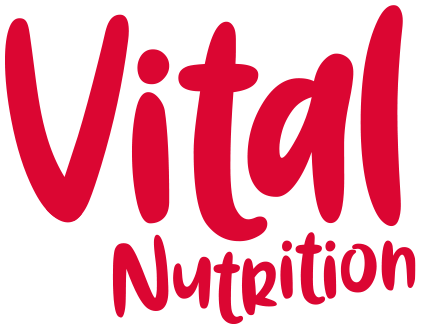Never mind your 5-a-day - what about aiming for 30-a-week?
How many different plant foods can you eat in a week? We all know the 5-a-day message (even if we struggle to achieve it), but have you heard the one about 30-a-week?
It is obvious that the more plants we eat, the better it is for our heath and wellbeing. Researchers at the America Gut Project found that people who had the widest variety of plant foods in their diets had a better diversity of healthy bacteria in their gut microbiome.
Diversity and abundance is the aim of the game when it comes to a healthy microbiome, and this has benefits far beyond that of good digestion.
Cardiovascular health
Immune support
Skin health
Mental wellbeing
Insulin and blood sugar balance
Weight management
These are just some of the benefits we can expect if we look after our microbiome, and one of the easiest ways to do this is to get as much variety into our diet as possible. That's where the 30-a-week idea came from.
As well as upping your game with your fruit and vegetable intake, other plant foods count too. Think beans and lentils, nuts and seeds, herbs and spices, grains and even green tea.
Why 30-a-week?
Plant foods are packed with a variety of nutrients and phytochemicals that help support an healthy balance of probiotic bacteria in our microbiome. Here are a couple of good reasons why:
FIBRE - We know that fibre has benefits for our digestion, but getting a varied diet means we eat a balance of soluble fibre and insoluble fibre, alongside some resistant starch that is fermented by our gut flora, helping them to thrive.
POLYPHENOLS - Plant based antioxidants that give plant foods their characteristic colour, flavour and aroma are important for a healthy microbiome. Colourful fruit and vegetables, herbs and spices and green tea are good sources.
Can you eat 30-a-week?
If you are a creature of habit then it is time to shake things up a bit. Supercharge your breakfast, get creative with more interesting lunches and spice things up at dinnertime and you will soon reach the 30-a-week target.
Here are a few ideas to get you started:
Supercharge your breakfast
Let's take a simple bowl of porridge as an example. Just by adding a few extras, you can move this from one plant food (oats), to a whopping eight.
Add some frozen fruit (a few blueberries and raspberries...) and a handful of seeds (a mix of sunflower, pumpkin, sesame and flaxseed...) and a sprinkle of spice (a touch of cinnamon or ginger): oats + berries + seeds = 8
Think outside the lunchbox
Sometimes lunch gets a raw deal in our daily vegetable quota. We need a couple of portions at lunch as well as dinner. Think soups, salads, raw veg sticks and you lunch will not only be healthier, but a lot more interesting than the same soggy sandwich again and again.
Here's an idea: pack a wholemeal pitta with some grated carrot, rocket, chopped peppers, avocado and houmous, then have this with a bowl of homemade soup (celery, parsley, carrot, onion, leek, barley, split peas, lentils): filled pitta + soup = 14
Dinner Winners
Use some of the same vegetables you had in your soup (you can't count these again, but you will avoid unnecessary food waste), and add a few extra to make a decent Bolognese. Tinned tomatoes, garlic, onion, carrot, peppers, puy lentils (for a veggie version, or mix with mince to help your meat go further).
Serve with wholemeal pasta and a side salad with toasted seeds (using some of the leftover ingredients from breakfast and lunch): Spaghetti Bolognese = an extra 6 plant foods.
Are you up for the challenge? Never mind 30-a-week - you might even hit 30 in one day.
This blog post first appeared as my column in The Irish News on Saturday 5th March 2022.

